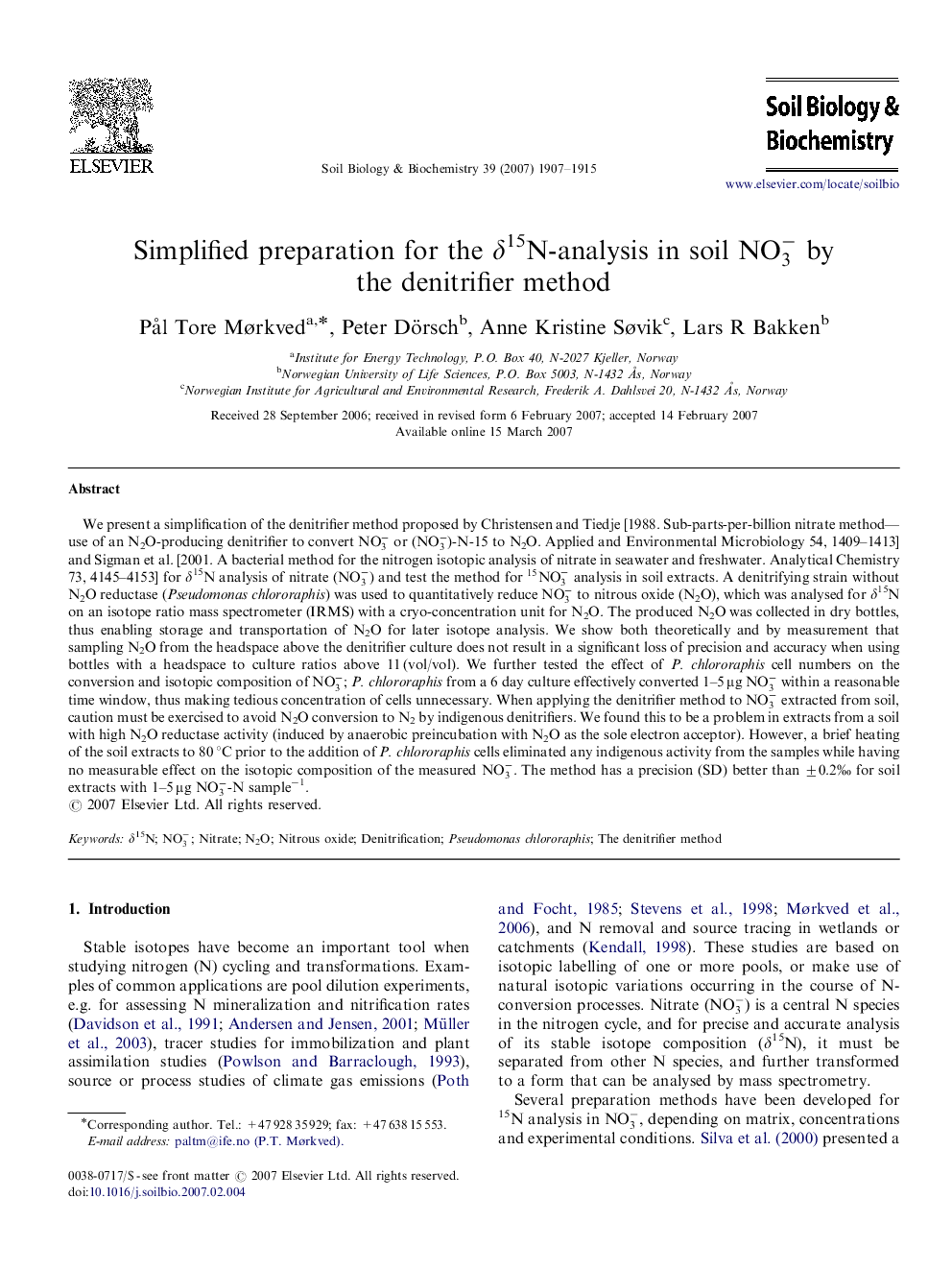| Article ID | Journal | Published Year | Pages | File Type |
|---|---|---|---|---|
| 2026056 | Soil Biology and Biochemistry | 2007 | 9 Pages |
We present a simplification of the denitrifier method proposed by Christensen and Tiedje [1988. Sub-parts-per-billion nitrate method—use of an N2O-producing denitrifier to convert NO3- or (NO3-)-N-15 to N2O. Applied and Environmental Microbiology 54, 1409–1413] and Sigman et al. [2001. A bacterial method for the nitrogen isotopic analysis of nitrate in seawater and freshwater. Analytical Chemistry 73, 4145–4153] for δ15N analysis of nitrate (NO3-) and test the method for 15NO3- analysis in soil extracts. A denitrifying strain without N2O reductase (Pseudomonas chlororaphis ) was used to quantitatively reduce NO3- to nitrous oxide (N2O), which was analysed for δ15N on an isotope ratio mass spectrometer (IRMS) with a cryo-concentration unit for N2O. The produced N2O was collected in dry bottles, thus enabling storage and transportation of N2O for later isotope analysis. We show both theoretically and by measurement that sampling N2O from the headspace above the denitrifier culture does not result in a significant loss of precision and accuracy when using bottles with a headspace to culture ratios above 11 (vol/vol). We further tested the effect of P. chlororaphis cell numbers on the conversion and isotopic composition of NO3-; P. chlororaphis from a 6 day culture effectively converted 1–5 μg NO3- within a reasonable time window, thus making tedious concentration of cells unnecessary. When applying the denitrifier method to NO3- extracted from soil, caution must be exercised to avoid N2O conversion to N2 by indigenous denitrifiers. We found this to be a problem in extracts from a soil with high N2O reductase activity (induced by anaerobic preincubation with N2O as the sole electron acceptor). However, a brief heating of the soil extracts to 80 °C prior to the addition of P. chlororaphis cells eliminated any indigenous activity from the samples while having no measurable effect on the isotopic composition of the measured NO3-. The method has a precision (SD) better than ±0.2‰ for soil extracts with 1–5 μg NO3--N sample−1.
